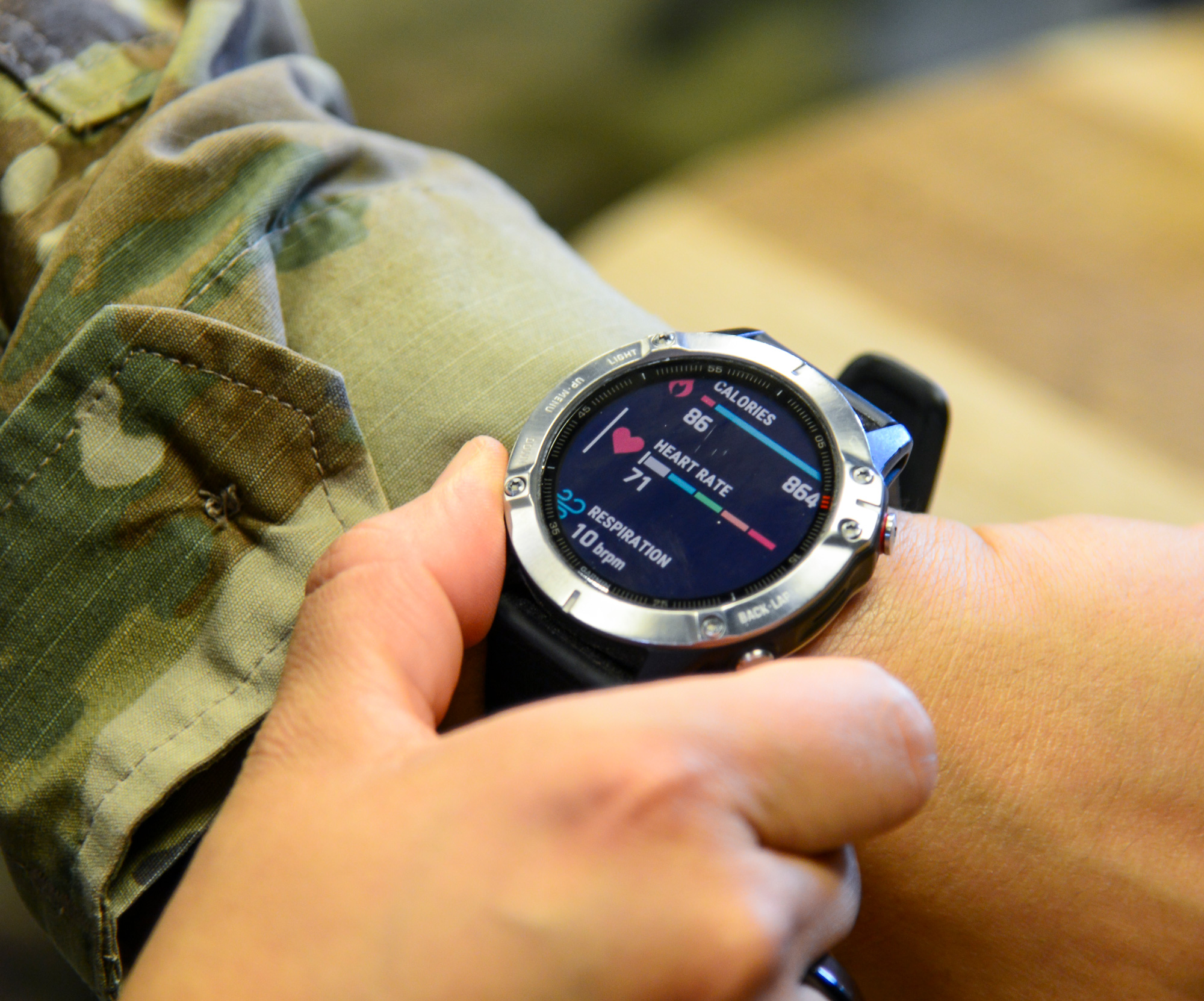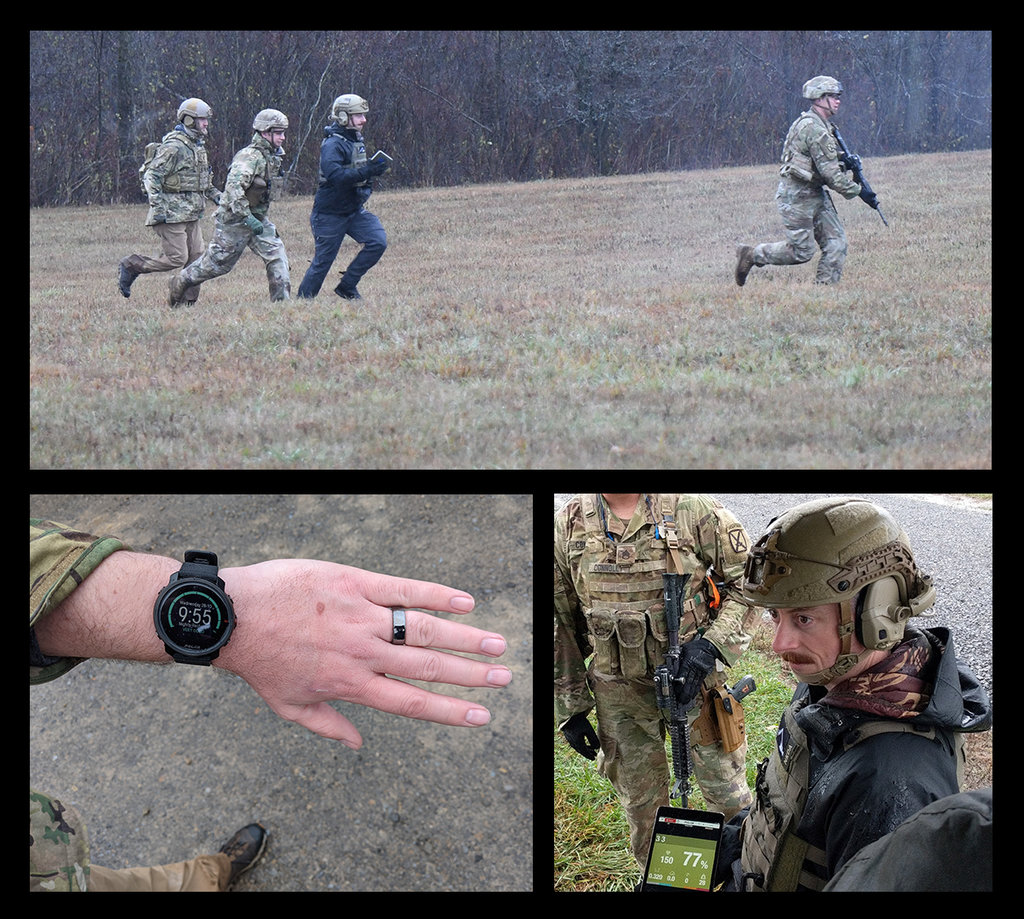Soldier Modernisation
Data centric: US Army looks to wearable devices for new edge
The notion of soldier modernisation is not limited to the development of new weapon systems or body armour, but also encompasses wearable technology to monitor operators. Tim Fish reports.

The US military is exploring ways in which to utilise wearable devices to improve monitoring of personnel on operations. Credit: US Department of Defense.
Technological advances in the commercial sector mean that small light wearable devices can be adapted for military use and play an important role in monitoring individual service personnel performance and capability.
Commercially available rings and watches are used by civilians doing regular exercise to track distances run or the health of the body during physical exertion and these can similarly be used to check a soldier’s activity on operations or in training.
It means that military leaders can have the ability to conduct performance tracking like most sports teams. The US Army is looking at harnessing these technologies to allow it to improve the training and readiness of its soldiers and give its forces the edge when they engage in operations.
US Army Combat Capabilities Development Command (DEVCOM) in partnership with the US Army Medical Research and Development Command (MRDC) is running two science and technology (S&T) projects to assess the viability of using wearable devices to gather data about troops wellbeing and also to provide information about the best way in which to adapt training programmes to improve soldier health and fitness. This leads to better decision-making and performance on the battlefield.
If we can find those five or 10 things that – if we spend time on – we can affect 20 different tasks that account for what soldiers are supposed to do to perform their jobs that's something worthwhile if we can help focus their time
Joseph Patterson, OHWS programme manager
DEVCOM’s Optimising the Human Weapon System (OHWS) project was initiated in Q4 2020 initially as a way of detecting COVID-19 in soldiers but has expanded from an early feasibility study using 1,700 troops in a battalion to improve the health data of troops in garrison training and off-duty into a scalability study that will eventually gather data from a brigade-size formation in excess of 4,000 soldiers.
Joseph Patterson, soldier performance strategist and programme manager for OHWS told Global Defence Technology that the US Army’s 10th Mountain Division has conducted up to 1,000 days of data collection using the Oura Ring and Polar GRIT X Pro watch. Patterson said the Oura Ring “specifically looks at some really good quality, sleep metrics, like sleep efficiency, and duration” whilst Polar GRIT X Pro “is really good at cardiovascular analysis in training, load, and volume of training”.
This data is then used to help guide professionals on how they develop training plans. “It can actually be used to help tailor high density days versus low density days,” Patterson added.
OHWS is funded to run until the end of 2024 and aims to provide the US Army with a concept of operations about how the system could be employed more widely to improve the warfighting capabilities of individuals.
Targeting human performance
The other S&T effort, which fed into OHWS is the five-year Measuring and Advancing Soldier Tactical Readiness and Effectiveness (MASTR-E) programme that started in October 2020. It has been looking in detail at the performance metrics for specific types of tasks and operations.
The wearable devices used in this effort include Inertial Measurement Units (IMUs) from company APDM to detect acceleration, shot detection and orientation; Polar GRIT wrist watches to monitor heart rate, provide GPS and an activity tracker; Polar Team Pro chest straps as a back-up heart detector and GPS system; TASCAM audio recorders for communication and shot detection; and MILES Vest and Halo chest and helmet devices for engagement data and shot detection.
For SOF end-users it is much easier as they can simply buy and use equipment as they see fit for their missions, and they don’t need to have written requirements
Alex Gruentzig, CEO of Legionarious
George Matook, MASTR-E S&T programme manager told Global Defence Technology that the project was charged to “determine the human performance X factors about humans, that we need to care about in the army, to have better performance to help soldiers perform their individual and collective tasks better, because that's going to make them more lethal, more ready and more survivable.”
These include five main constructs: shoot, move, sustain, navigate and communication and measure the human requirements to best undertake those. “What's going to be really interesting as we continue down this path of analysis, is what are those common X factors between them. If we can find those five or 10 things that – if we spend time on – we can affect 20 different tasks that account for what soldiers are supposed to do to perform their jobs that's something worthwhile if we can help focus their time,” Patterson said.
With another year-and-a-half to go on MASTR-E the plan is to meet the S&T goals collecting an advanced body of knowledge on the topic and find out the best way of employing the technology. The hope is that this can be delivered to the US Army’s procurement organisation to then deliver a system to soldiers.
Individuals are already buying these products on the commercial market. Therefore, an issue for both OHWS and MASTR-E is the way in which they might be able to integrate data from existing personal wearable devices used by soldiers alongside those bought by and distributed by the US Army.
Smart garments
Other wearable technologies are being investigated that can have a more immediate impact on operations by providing medical data on injuries sustained by soldiers. Boston-based start-up company Legionarius has secured over $1m in funding from the US Government to develop a new Smart Garment system.
The garment is made of a thin conductive material located between two outer clothing layers in shirts and trousers. It is fitted with onboard PCB electronic that can monitor a soldier’s vital signs (heart rate, breathing, etc.) and check for holes such as with the penetration of bullets or stabbing weapons that could cause haemorrhaging.
This data and the location of the soldier can be transmitted via the US Army’s Android Tactical Awareness Kit (ATAK) to medical personnel and farther back to HQ and military hospitals to allow a faster response to a combat casualty and quicker progress through the treatment stages.
CEO of Legionarious, Alex Gruentzig, said that during combat care information about a casualty is fed into the system from the point of treatment when a medic completes their first assessment. He explained that what the Smart Garment provides is the medical data about a casualty much earlier from the point of injury giving first responders and doctors more information sooner improving treatment and the ability to better to triage numerous patients,
“Currently there are no written requirements from [the US Department of Defense] for this kind of garments; that’s why I got invited to demonstrate my technology recently to a DoD requirements office,” Guentzig said. “They are going to write requirements for those kinds of wearable technologies.”

More than 530 soldiers from 4th Battalion, 31st Infantry Regiment, 2nd Brigade Combat Team, 10th Mountain Division donned wearable sensory technology to participate in a yearlong human performance MASTR-E study. Credit: US DoD
Gruentzig explained that that Legionarious has been working with the US Navy SEALs, Special Operations Command (SOCOM) community and SOFWerx to secure advance funding for the development of prototype garments. “For SOF end-users it is much easier as they can simply buy and use equipment as they see fit for their missions, and they don’t need to have written requirements.
“When I started working with SOCOM, the end-users basically told me what they want or not want the system to do. So, these were my requirements to work on throughout the development phase, including extremely low power consumption and weight.”
The Smart Garment is currently at Technology Readiness Level (TRL) Six, which means that it needs to complete operational deployments to advance further to TRL Seven and beyond. Gruentzig said that he is working on a phase two statement of work package to put the Smart Garment on to end users for patrols, combat casualty care training and close quarter battles.
He added that the key was to make the Smart Garment interoperable with the existing ATAK software to enable to proper transfer and display of the information across the communications networks and on devices.
As the era of great power competition between peer rivals heats up militaries are seeking ways to get the edge on the battlefield. Technological innovation is providing options for wearable devices that can provide new monitoring capabilities for soldiers.
New devices are able to provide information that can support advanced soldier training and conditioning as well as faster and more efficient injury detection and recovery that are beginning to show what the market can offer in this domain.